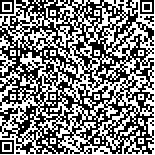本文已被:浏览 976次 下载 1544次
Received:December 02, 2019 Revised:December 27, 2019
Received:December 02, 2019 Revised:December 27, 2019
中文摘要: 仪器共享平台的发展提高了各高校的仪器设备的使用率. 但是在设备的使用过程中, 对设备的故障检测方面还没有得到改善. 针对上述问题, 本文收集了医用影像设备的相关数据, 采用PSO_RF的双向特征选择方法进行特征选择, 然后构建了基于LightGBM (Light Gradient Boosting Machine)的故障检测模型, 并将其应用于医用影像设备的故障检测中. 通过标准评价体系的建立及不同模型对故障诊断结果的对比, 相对于传统的机器学习算法, 该模型在故障检测的精确率、召回率、F1值等评价指标上有较好的表现, 对于加快仪器故障点的发现以及提高仪器利用率具有积极推进作用.
Abstract:The development of the instrument sharing platform has increased the utilization rate of instruments and equipment in various universities. However, during the use of the equipment, the fault detection of the equipment has not been improved. In view of the above problems, this study collected relevant data of medical imaging equipment, adopted the two-way feature selection method of PSO_RF for feature selection, then built a fault detection model based on LightGBM (Light Gradient Boosting Machine), and applied it to the fault detection of medical imaging equipment. Through the establishment of the standard evaluation system and the comparison of fault diagnosis results by different models, compared with the traditional machine learning algorithm, this model has a better performance in the accuracy rate, recall rate, F1 value and other evaluation indicators of fault detection, which has a positive role in accelerating the discovery of instrument fault points and improving the utilization rate of instruments.
文章编号: 中图分类号: 文献标志码:
基金项目:
引用文本:
韩金鹏,李冬梅,王嵩.基于PSO_RF双向特征选择和LightGBM设备故障检测.计算机系统应用,2020,29(7):228-232
HAN Jin-Peng,LI Dong-Mei,WANG Song.Device Fault Detection Based on PSO_ RF Bidirectional Feature Selection and LightGBM.COMPUTER SYSTEMS APPLICATIONS,2020,29(7):228-232
韩金鹏,李冬梅,王嵩.基于PSO_RF双向特征选择和LightGBM设备故障检测.计算机系统应用,2020,29(7):228-232
HAN Jin-Peng,LI Dong-Mei,WANG Song.Device Fault Detection Based on PSO_ RF Bidirectional Feature Selection and LightGBM.COMPUTER SYSTEMS APPLICATIONS,2020,29(7):228-232


